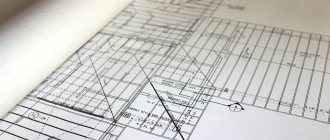Pros and cons of a niche
Car parking is a complex business, so the first step is to determine all the possible pros and cons.
Pros:
- High demand;
- There is no expensive equipment or technology;
- Can become a passive source of profit.
Minuses:
- Difficulties in officially registering a business and obtaining all permits;
- If you choose a bad location, it is impossible to move to another along with the entire business;
- Some types of parking lots require the entrepreneur to spend millions on construction budgets;
- You bear the risk of theft and damage to your clients' vehicles.
Some business models can be accurately said to outweigh the pros or cons. In the case of a parking lot, everything is complicated. Here the pros and cons are balanced. Therefore, we will classify this business idea as an average one, when it does not promise anything very bad or very good. In other words, the chances of success and failure are equal.
A law has been written about parking and parking
The initiative to adopt a separate law on parking was made by Oleg Nilov, State Duma deputy, member of the Transport Committee, deputy head of the A Just Russia faction. One project regulating parking activities was not enough: he submitted a whole package of documents to the lower house of the Federal Assembly. The main one is the bill “On Parking”.
The explanation to the document states that it is a framework and is aimed “at enshrining in Russian legislation the basic principles of parking activities.” The text of the project provides a definition of the concepts “parking”, “parking lot”, “parking space”, “car space”, etc. Thus, the author is sure, the existing uncertainty in the conceptual apparatus is legislatively eliminated.
Thus, a parking lot is understood as “a specially designated and, if necessary, arranged and equipped area, used as a place for the organized storage of motor vehicles on a paid basis or without charging a fee - by decision of the owner of the land plot or the owner of the corresponding part of the building allocated for parking.” Parking can be indoor or outdoor, and can also be part of overpass or under-bridge spaces, areas, buildings or structures.
The bill provides for a number of requirements for parking lots. Thus, they cannot be placed under the buildings of preschool institutions, schools, orphanages and hospital hospitals. 15-30% of the parking lot area not occupied by buildings should have landscaping. The fundamental difference from parking is that the owner of the parking lot is responsible for the safety of vehicles (under an agreement with the car owner).
Parking is “a specially designated and, if necessary, arranged and equipped place intended for the organized parking of vehicles on a paid basis or without charging a fee by decision of the owner or other owner of the highway, the owner of the land plot or the owner of the corresponding part of the building, structure or structure.” A parking lot can be part of a road, adjacent to a sidewalk, roadside, overpass or bridge, or part of underpass or under-bridge spaces, squares, buildings or structures.
Mr. Nilov explains that the parking lot is intended specifically for storing vehicles, and parking only involves organized parking of vehicles without the possibility of storing them.
According to the bill, you can stop in the parking lot for free, but for no more than 15 minutes. Subjects of the Russian Federation can determine a list of paid parking spaces (at least half), in which you can stand for free for up to one hour. In addition, in each parking lot, at least 10% of the spaces must be allocated for people with disabilities, for whom no fee will be charged. Emergency services (ambulance, fire brigade, police, etc.), Heroes of the Soviet Union and Heroes of Russia, holders of the Order of Glory, participants of the Great Patriotic War, some categories of military personnel, and persons affected by the disaster at the Chernobyl nuclear power plant can also use the parking free of charge.
Also, according to the bill, car owners are given an additional guarantee: they will not have to pay additional money for parking in addition to the entrance fee to the territory. Payment can be made through a payment terminal near the paid parking lot or using
Internet within 24 hours after the end of the parking session. Money for using paid parking is credited to the budget of the constituent entity of the Russian Federation, the project says.
Help "TO"
In Ulyanovsk there are about 160 night parking lots and about 120 car parks (data from the city administration). There are no statistics on illegal parking. Representatives of district administrations and internal affairs bodies periodically conduct raids throughout the city at night, one of the tasks of which is to find illegal parking and, if necessary, dismantle security booths. Facts of such violations are recorded in administrative protocols.
Types of parking
It's time to briefly go over the types of parking lots, analyze them and choose the option that suits us.
Difference between car park and parking
Despite the fact that parking and parking are considered synonymous, in fact, in legal terms they have some differences.
The key difference is that a car park is responsible for the safety of cars, while a parking lot (paid or free) is not, as it simply rents out space for a car.
Some parking lot owners are trying to avoid responsibility for the safety of vehicles. They put up a notice that they are not responsible, but as a rule, this does not save them later in court.
In reality, lawsuits against parking lot owners are extremely rare. All modern cars are equipped with alarms, your land is delimited by a fence and a security guard sits at the entrance. That's why things rarely happen to cars. They definitely won’t be stolen, but they may well be scratched by other drivers when parking.
Open
The first type is the most familiar parking lot for everyone. Its main feature is its location. It is located on the ground and does not have any structures protecting cars from rain and snow.
When organizing an outdoor parking lot, we do not have to invest a large amount of money on construction. It is enough to cover the area with asphalt, install a fence and a security booth. That is why novice entrepreneurs often choose this type of parking lot.
Let's consider financial plans for such parking lots with 50, 100 and 250 places.
For 50 seats
According to the laws, a parking lot with 50 parking spaces must be 15 meters away from residential buildings and 50 meters away from schools, hospitals and kindergartens. The required area for one parking space is 14 sq.m. This means we need an area of 700 sq.m. To cover such an area with asphalt we will need 560,000 rubles. Fencing the perimeter with a fence will cost 290,000 rubles. Also, don’t forget about the costs of lights, a barrier and a security booth.
As a result, the cost of opening a parking lot for 50 places will be approximately 1,000,000 rubles. The cost of parking for a month is on average 4,500 rubles and if it is filled to 100%, the revenue will be 225,000 rubles. From this amount it is worth subtracting monthly expenses for employee salaries, territory rent and other expenses. Then the net profit will be 125,000 rubles, and the payback period will be 8 months.
For 100 seats
Here the essence is exactly the same, but we will only show numbers. To open a parking lot with 100 spaces, we must move 25 meters away from residential buildings and 50 meters away from schools and hospitals.
A brief business plan will look like this:
- Minimum required area:
1400 sq.m. - Asphalting:
1,120,000 rub. - Fence:
580,000 rub. - Other expenses for arrangement:
RUB 400,000. - Necessary investments:
2,100,000 rubles. - Potential revenue:
450,000 rub. - Potential profit:
250,000 rub. - Payback:
9 months
For 250 seats
Large parking lots for up to 300 cars should be located 35 meters from residential buildings, 50 meters from child care facilities and 60 meters from hospitals and sports facilities.
The financial plan for a parking lot of this size would be as follows:
- Minimum required area:
3500 sq.m. - Asphalting:
2,800,000 rub. - Fence:
1,500,000 rub. - Other expenses for arrangement:
RUB 800,000. - Necessary investments:
5,100,000 rub. - Potential revenue:
1,125,000 rub. - Potential profit:
775,000 rub. - Payback:
7 months
Important note!
It should be noted that the calculations were made taking into account 100% load. You need to understand that in reality the revenue may be lower. In the first months, 100% workload is generally unrealistic, because you will build up a client base gradually. Car parks with 50 and 100 spaces may well reach the point where their occupancy will be 100%, but large parking lots are unlikely to reach this number. Their real workload percentage is 50%-70%, 100% is achieved in very rare cases.
Closed
We decided not to focus on closed parking lots, because the costs of opening them are extremely high and it is unlikely that among our readers there will be many people who have a budget of more than 10 million rubles. Nevertheless, to understand the whole picture of the market, we will analyze these options.
Closed parking lots can be above ground or underground. They are always built in large cities, where car owners are willing to pay large sums for the maintenance of their equipment. In cities with a population of less than 1 million people, it is not economically profitable to build such parking lots.
Multi-level above ground
Such a parking lot involves a building with several floors, which is located on the ground in a densely populated area.
We’ll immediately shock you with big numbers. The multi-level parking project alone will cost from 300,000 rubles. The price of construction work is 20,000 rubles per sq.m. To erect a building designed for 400 car spaces with an area of 2,000 sq.m. we will have to spend 40 million rubles. In addition to construction, we should not forget that we must buy land; prices can reach from 5 to 20 million rubles. depending on regions.
Such parking lots bring their owners approximately 1 million rubles. per month and pays off in about 4-6 years.
Multi-level underground
The costs of building underground parking are even higher. One square meter will cost from 30,000 rubles. up to 130,000 rub. It is very expensive. Such projects are built by experienced entrepreneurs with a large budget or investor contacts. The potential profit will be from 1 million rubles, and the payback will be around 5-7 years. Of course, this business model is not suitable for small cities.
For heavy trucks
The last idea we want to look at is a truck parking lot. It is usually located on the outskirts of the city or on the highway, so renting or buying land will be inexpensive.
An interesting life hack that some people use. Cemeteries are often located on the outskirts of the city. Of course, no one wants to live next to them or open restaurants, so the land around the cemetery is considered unprofitable and is quite cheap. Some entrepreneurs, in order to save their budget, buy or rent just such land for the construction of a truck parking lot.
Of course, the business plan for heavy truck parking will be very different from the usual one. In this case, our target audience is truckers who carry cargo worth millions of rubles. Therefore, in addition to providing a parking space, we must provide the following:
- Reliable security;
- Cafe;
- Hotel;
- Shop;
- Showers and toilets;
- Tire fitting;
- Technical service.
As you understand, each item is practically a separate business. Just covering the territory with high-quality slabs that will withstand the weight of trucks will cost 5 million rubles. And the construction of the complex as a whole can take up to 10-20 million rubles. This is a very risky business. We do not recommend you get involved in this business unless you have an understanding of the niche and experience in entrepreneurship.
Parking organization
© Kira Kanayan, Ruben Kanayan, Armen Kanayan Chapter from the book “Design of stores and shopping centers”
Almost all major cities of Russia, from St. Petersburg to Vladivostok, have already faced the problem of an increasing number of cars. As Vladivostok residents themselves joke, there are two and a half cars per family: two personal ones are always present, and the third one, that is, it is not, it is taken for sale, so it turns out to be half. Overloaded transport routes and junctions, hour-long traffic jams and sidewalks and even lawns in courtyards densely packed with cars are becoming a common occurrence. The problem is acute not only in Moscow and St. Petersburg, but also in other large cities, especially those with a radial layout. The difficult legacy of the urban planning situation of the Soviet era, when they simply did not count on a large number of private cars, is taking its toll. But even if car owners are accustomed to “shove” their beloved horse into a free space near their office or home and have learned not to be indignant at this (or at least not to be indignant every day), they would like to see convenient parking in front of the store. A store is a place where customers are invited, where they are expected and ready to provide them with all sorts of conveniences and joys in exchange for the money spent. “No parking - no trade” - it’s hard to disagree with this statement today. You can’t skimp on parking and rely on the fact that “no one in our city has it,” or that visitors will look for spaces along the roadway. Buyers don't want the parking problem to fall on their shoulders; they can simply turn around and drive to a more convenient location.
Visitors to a store see the parking lot at the same time they see the façade, and this is often where their first impression of the store begins. An empty parking lot makes the customer doubt that the store is popular. And, having experienced difficulties in finding a space in an inconvenient parking lot, a person may enter the store in a bad mood. How do shoppers who come to the store evaluate parking? Firstly, they are concerned about the safety of personal transport. Moreover, if in Krasnoyarsk they are mostly afraid of theft, then in Moscow they are also afraid of damage. After all, when cars are parked too closely and the passages are narrow, you can leave the store and find a dent on the fender or door. We often hear from shopping center owners a desire to position a cafe or food court in such a way that visitors can sit by the window and look at their cars. But is this the best business activity for a visitor from a commercial point of view? When a visitor has the opportunity to enjoy a beautiful landscape, panorama or historical building, this can become an additional factor in the attractiveness of a shopping center. There is nothing interesting in the window - then you can look at the windows of the stores located next to the food court, admire the new products or seasonal collection, and, after tasting coffee and cake, go inside or remember this store. And when a visitor has to look at his car, this means that they are trying to shift the task of protecting cars in the parking lot onto the shoulders of buyers, anxiety will settle in his soul, and he will not be able to fully devote himself to the process of shopping and entertainment. We remind you again that the task of retail architecture is to create a good mood, because in a good mood they spend more and come to pleasant places more often. As the Roman emperor Marcus Aurelius said, “no one gets tired of receiving benefits, benefits and pleasure for himself.”
Another thing buyers think about when they pull into a parking lot is ease of movement. It should be convenient both when the buyer is inside the car and when leaving it. Where in the store or shopping center the buyer will go, how he will deliver the purchased goods to the car, whether he can take them out on a cart or drive closer to load large purchases, whether it will be easy to find his car later - all these are significant factors for the buyer. Therefore, let's talk about how a store can properly organize parking.
Standards and calculated indicators
The required number of parking spaces for shops and shopping centers is determined at the rate of 1 parking space per 15-25 m2 of retail space. Such a standard exists in Moscow (MGSN 1.01.-99 - “Norms and rules for design, planning and development of Moscow”). For a more accurate calculation, an adjustment is made to take into account the type of store (shopping center) and the characteristics of motorists visiting it. The number of places is influenced by the following factors:
- Size of retail space. The number of parking spaces can be increased, for example, to 1 space per 10-15 m2 of retail space. This calculation is used for large retail enterprises - hypermarkets and cash & carry, located on the outskirts or outside the city limits. For small stores, with a sales area from 500 to 1000 m2, the calculated number of parking spaces can be reduced by 2.5 times.
- Store specialization. The presence of businesses in a shopping center that attract a large number of shoppers and/or “keep” visitors inside for a significant amount of time requires more parking spaces. Such enterprises are, for example, cinemas, restaurants, sports and entertainment establishments. Shopping at a hypermarket, cash & carry, or selecting the necessary goods at a hardware store can take more than two hours.
- Uniformity of demand and store visits. The store may experience significant peak loads - an influx of end consumers or professional buyers. Therefore, at this time, the store parking lot must accommodate everyone, otherwise customers, having not found a parking space a couple of times, will learn to drive to other stores.
- Distance from residential or office areas, stations and public transport routes. Obviously, when it is difficult or impossible to get to a store on foot or by bus, the number of parking spaces must be sufficient.
In shopping centers and multifunctional complexes, an accurate calculation of the number of parking spaces is made by identifying functions and counting spaces for each of them. Thus, for catering establishments, the number of seats at tables is taken into account, and 1 parking space is for 6-12 seats (MGSN 1.01.-99). Clarifications, similar to retail enterprises, are made depending on the type of restaurant or cafe: for a luxury restaurant, 1 parking space is required for 6-7 seats in the hall, for a first-class restaurant - 1 parking space for 10-12 seats at tables, for a cafe — 1 parking space for 11-12 seats. When the complex has an office function, parking is calculated based on the number of employees, and 1 parking space should be for 3-5 people. This standard value already takes into account visitors to office buildings. Since it can be difficult to determine how many workers will move into offices and offices, you can make a calculation based on the number of square meters of the total area of office premises: 1 parking space per 50-60 square meters, depending on the distance from metro stations.
The parking supply ratio shows what percentage of parking spaces of the required number of parking spaces is available for a given retail space. For example, a store has a sales area of 3500 m2. The required number of parking spaces is 140. The project has the ability to accommodate only 110 cars, so the parking availability will be 78.6%. This means that out of every five cars of potential buyers, one will not find a place in the parking lot of this store. So you can imagine the lost profits.
In Moscow, in the central planning zone or during the reconstruction of existing stores, it is allowed to reduce the estimated number of parking spaces by 10%. The ability to smooth out the situation when there is insufficient parking for a store or shopping center lies in targeted work with customers who can come on foot or come by public transport. Such work includes selection of an assortment (lack of large-sized goods or trading based on samples with home delivery) and two options for a pricing strategy. The first is a bet on expensive goods, with the expectation that the number of buyers and their cars will be limited. We have already talked about the risks when choosing such a strategy. The second is a more democratic image of the store, which does not frighten “horseless” visitors. The second path may be promising for former Soviet department stores that occupy places in the city center at public transport interchange hubs and are traditionally visited not only by residents, but also by guests of the city. An example of such a center is the Perm department store in Perm, TSUM in Novosibirsk and many others. Recruitment efforts can also be carried out among employees of nearby offices.
In the realities of construction of retail facilities in Moscow and a number of other large cities, the following negative practice has become widespread: when the provision of parking is low, offices are added to the premises, and parking is agreed upon according to office standards, which are significantly lower than retail ones. You can agree on anything, but in the end you deceive yourself...
In foreign practice, for example, in the USA and Canada, the parking index is used.
The parking index is the number of parking spaces per 1,000 square feet of GLA (gross leasable area). 1000 square feet is equivalent to 93 square meters. The value of this indicator depends on:
- Depending on the size of the area and the type of shopping center . In the USA the following values are accepted:
- 4 - for shopping centers with a GLA size from 25,000 to 400,000 sq. feet (2,350 – 37,200 sq. meters).
- 5 – with a GLA size of more than 600,000 sq. feet (55,800 square meters)
4.5 – for shopping centers 400,000 – 600,000 GLA (37,200 – 55,800 sq. meters)
In Canada, an index of 3.9 is considered acceptable for a regional shopping center, and 5.5 for an interregional one. Thus, we see that the larger the retail facility, the greater the number of parking spaces should be per 1000 square meters. Let's remember Reilly's classic formula - a large retail space attracts customers from a larger area, and they can travel a long way to get to a store or shopping center.
The advantage of multifunctional complexes from an urban planning point of view is that they make it possible to use urban space more economically and regulate the flow of people and cars. This also applies to parking space, which can be used by visitors to shops during the day, and by entertainment venues in the evening (see Fig. 1).
Having determined the required number of spaces, we will calculate how much space is required for parking. To park one passenger car, the following area is required:
- 20 m2 with transverse arrangement of machines;
- 23 m2 when placed at an angle.
- 25 m2 for large vehicles. If there is a large parking area and there are shops for professional buyers (construction and finishing materials, cash & carry), space should be provided for large vehicles - minibuses, vans, semi-trucks. For example, in Germany up to 20% of the parking area is allocated for them. The dimensions of the space for such transport are 6 × 2.5 m.
In countries where heavy traffic has led to the popularity of small cars, spaces are sometimes allocated for small cars. The parking lots also provide space for bicycles, mopeds, and motorcycles. Places for bicycles are relevant for those shops that are located near country houses and cottage villages. True, such places need reliable protection. There are even special devices that lift bicycles up, and you can get it like a coat in your wardrobe - with a token.
The above estimates include driveways and turns inside the parking lot, but do not include driveways. Having made a simple calculation, we will see that the parking area is approximately equal to the retail area. It is necessary to take into account that at the stage of the detailed design, when developing a detailed scheme for landscaping the territory, the number of places, as a rule, is reduced due to various landscaping elements. Therefore, it is recommended to take the value with a margin. When calculating the number of underground parking spaces, a value of 35 m2 for one car is usually used. Columns “eat up” useful space: if the distance between the axes of the columns is 6 m, only 2 cars can be placed in the area between the columns.
Next we decide where the parking will be located:
Parking location
Parking can be on the ground, underground, on the roof of a building, or adjacent to the building (multi-level parking). Obviously, surface parking is more convenient for visitors and costs less for the owner. Its shape and configuration matters. When determining the location of a building on a site and a parking location, we must take into account the following:
- how visible the parking lot is to visitors driving up to the store;
- Is it easy to control and secure parking;
- how long visitors will have to walk to the entrance from the most remote points in the parking lot.
It turns out that the best option is a rectangular parking lot located in front of the building. The L-shaped parking lot is slightly inferior to the rectangular one; it should be facing the flow, and the entry point should be in the corner. The U-shaped parking around the building is already much worse, and the worst solution is separate pieces of parking located in different places. English specialist in retail architecture Nadine Beddington advises placing parking in such a way that the distance from the most remote places to the main stores does not exceed 200 m.
It is important to note that in the dark, special attention should be paid to lighting the perimeter of surface parking, its remote areas and “pockets”. The minimum illumination in an open parking lot should not be lower than 50 lux (lux).
A number of visitors have a negative attitude towards underground parking. We came across a couple of places where it was frankly scary - the ceiling was dripping, it was damp, it was dark, God forbid, they would hit you on the head and take away your purchases along with your car keys. The main concerns of visitors are related to the risk of damage to cars. Even if the underground parking is comfortable, as, for example, in the Yuzhny hypermarket in Tyumen, visitors drive there only after making sure that there is not a single space on the ground. But, of course, in the city center, where space is limited, underground parking is a reasonable solution.
Parking on the roof or on several levels can be significantly, even several times cheaper than underground. This is due to the lack of expensive underground work: waterproofing, complex air exchange systems. Visitors are more relaxed about parking on the roof, since there is enough space there and there are no columns, like underground. However, the main obstacle to the entrance to the top may be the ramp's too large slope and small turning radius with its small width. Longitudinal and transverse slopes of ramps in MGSN are not standardized; they must be accepted in the project “in accordance with technological requirements.” In foreign practice, the following ramp slope values are used:
- 10-12% - ordinary straight ramps;
- 8.5% - screw ramps;
- 15% - American steep ramps.
If the slope of the ramp is calm, for example, 10-12%, the visitor, following the arrow, may even be surprised that he finds himself on the roof. In Germany, the slope of ramps for passenger cars must not exceed 30%. Some Russian ramps in shopping centers clearly go beyond these requirements and represent a “fun” attraction. It is especially interesting to watch the expression on the faces of female drivers when they, having circled the ground in search of free space, fearlessly point their car upwards. Go ahead, guys! God won't give it away - the pig won't eat it! And on the way back, your car, loaded to the brim with groceries from the supermarket, will still fit into the turn and not fly off the ramp, like in an American action movie. True, for cautious and impressionable people, one visit to such a shopping center may be enough.
The permissible slope of surface parking according to American standards is 8%. This means that for every 1 meter of horizontal projection there is 8 cm of ascent or descent. With a greater slope, parking is made in the form of terraces separated by retaining walls, which should be perpendicular to the facade of the store. An effective technique is to decorate the dividing walls with greenery. In recent years, the tendency to improve parking lots with trees has been gaining momentum. The parking lot takes on a more picturesque appearance, it is more pleasant for customers to walk from their car to the store, and in the summer, cars do not overheat, remaining in the shade of trees. This trend reflects the general development of green marketing. The disadvantages of “green” parking, in general, are not very serious. For the owner, this means a slight reduction in parking capacity (of course, with proper design); for visitors, this means falling leaves, bird droppings, and the danger of falling branches during squally winds and hurricanes.
When entering a multi-level parking lot, a store visitor is concerned about where he can find a space and whether he will have to circle around. In open areas, with good lighting, visibility is much better. An electronic notification system about the number of free places, including at each level, eliminates the search problem. For the convenience and safety of vehicle movement, ascent and descent paths (ramps) can be separated between levels. If the shopping center contains a super or hypermarket, shoppers must be able to access each level of the parking lot with carts.
Organizing traffic in the parking lot
Like the entrance to the store and transitions to other floors, the entrance to the parking lot should be easy for visitors to find. Visitors should be informed in advance about where and when to turn to enter the parking lot. The sign must have an arrow and the distance to the turn. Clear signs are especially relevant for those stores whose parking is not located in front of the building.
In large shopping complexes, it is important to immediately separate the flow of cars and their parking areas. There are four main machine flows:
- buyers' cars;
- trucks delivering goods to the store,
- personal transport of service personnel.
- public transport (buses, minibuses).
When traffic inside a parking lot is not regulated by signs, this will inevitably lead to traffic jams and dissatisfaction among visitors. In the parking lots of large stores, shoppers with carts can feel uncomfortable. Therefore, pedestrian crossings should be well and brightly marked and framed on both sides with bolsters, also brightly colored and with reflectors.
A more convenient location for the entrance and exit is at different ends of the parking lot, so that the flow of cars entering and exiting does not interfere with each other. Specialized stores should have a special place for loading large goods (furniture, construction and finishing materials, large household appliances) into customers' cars. Even if the store provides delivery services. The buyer may want to immediately pick up tile adhesive if craftsmen are idle at home, or a rocking chair for his beloved mother-in-law if she is languishing in the country. When approaching the loading point, the buyer should also not move against the flow. In order to prevent theft, such a place should be separated from the place where goods entering the store are unloaded.
Placing cars in the parking lot
The dimensions of the parking space for one car are taken depending on the width of the driveways and the placement method (see Fig. 2). With narrow passages, the width of the parking space is increased so that there is a real opportunity to drive into it. Speaking about the size of parking spaces, we cannot help but recall Soviet standards with an unkind word. For example, the underground garage of our home was designed in the late 60s, and the width of the parking space there is 2.1 m. And Muscovites, unlike the residents of Rome, still love big cars...
When positioned at an angle of 45 or 60 degrees, the convenience and speed of entry/exit increases and traffic jams are not created. When parking is organized as a strip in front of a store on the street, the transverse arrangement can even be dangerous for both departing cars and passing traffic moving at high speed. But the parking capacity at a 90-degree angle is naturally greater. The table in Figure 3 shows the estimated parking along the sidewalk line, and we can see that with a 45-degree angle, the area required for a car is almost 1.5 times larger compared to a transverse arrangement, and the number of cars that can fit per A 100-meter strip is almost 30% less.
The particularities of visiting a store determine the arrangement method. An arrangement at an angle of 45 or 60 degrees is chosen for a store or shopping center if:
- there is a large flow of visitors in the store,
- Among buyers there is a significant proportion of women.
- Customers spend a relatively short time inside the store (no more than 1.5 - 2 hours).
If people come to the store purposefully and for a long time, arrangement at an angle of 90 degrees will be more effective.
Parking lot navigation system
Parking blocks should be clearly marked so that on the way back the visitor does not have to wander around looking for his car (“I remember there was a tree there and a man in a jacket...”). A place designated only by color is remembered worse than one marked only by letters or alphanumeric combinations. It works best when colors and symbols are added to alphanumerics. The technique of mnemonics (the science of memorization) is the use of elements that are consistent with each other, and the designations “letter-symbol-color” should not contradict each other, but enhance the joint effect. For example, at the Singapore Zoo, an excellent example of a commercial entertainment center, each parking block is marked with a letter of the alphabet, an image of an animal whose name begins with that letter: “C” for crocodile, “D” for dragon, “E” " – elephant (elephant), etc. and the corresponding color. A similar effective solution was applied in a shopping mall in Moscow. There underground parking has 3 levels. The first level P1 is remembered by visitors as the world of the African savannah: it is marked in orange and symbols of animals living in Africa - camel, elephant, rhinoceros, cheetah. The next level P2 resembles the forests of central Russia - green color and images of a bear, hare, hedgehog, and deer. Having descended to the lowest level of P3, buyers find themselves in the underwater kingdom - the color blue is used there, and drawings of a whale, starfish, dolphin and seahorse help to navigate.
Signs for directions, entry and exit points should be easy to read and visible from a distance, so it is not advisable to use more than two primary colors on such signs.
Step-by-step opening of a parking lot with 100 spaces
Take a closer look at how to open a parking lot. Step-by-step instructions will be provided for an open-air parking lot with 100 spaces and an area of 2500 sq.m. with a daily rental cost of 200 rubles. and monthly 4,500 rub.
Step 1 - Finding a Location
The first stage in this business is the most difficult. You must find a place for your future parking lot. According to government requirements, we must be located 25 meters from residential buildings and 50 meters from schools and hospitals.
In addition to government requirements, our location must comply with commercial interests. That is, you need to find a place where you will have clients. This is the key point of this business.
You need to open a map of the city and carefully analyze it. Older areas that are not expanding are usually already fully developed. They have parking lots and people know where to leave their car overnight. But the situation with new or expanding areas is completely different. In them you can find a great place that will be in great demand.
Step 2 - Land Issues
Once you find a great location, you need to figure out how you can get it for your purposes. There can be three options in this situation: this land is yours, it is private land or municipal. Let's look at everything one by one.
Own land
Opening a parking lot on your own land does not pose any problems at all, except for one. The location may not be profitable at all if you place a parking lot on it. Therefore, you should always start by looking for a profitable location and only then decide whether to rent or buy it. If you are sure that there will be demand for your land, then we can congratulate you, because you can easily open a profitable business on it.
Private partnership
As a rule, developers own good parking lots. You can negotiate with them and they will provide you with a land lease for 11 months with subsequent extension.
There should be no problems in this case, except that the owner of the land may refuse to rent it to you.
Municipal property
If the land belongs to the state, then this greatly complicates everything. You need:
- Permission from the land management committee on the possibility of placing a parking lot;
- The project was coordinated with Rospotrebnadzor, public utilities, the traffic police, the committee of architecture and urban planning;
- Permission from the municipal administration.
After this, a tender is put out for the land, and you may have competitors.
To summarize, we can say that leasing state land is a rather complicated process that will take a lot of time and effort.
Step 3 — Business registration and required documents
The business registration procedure is standard. You must register as an individual entrepreneur, choose the UTII tax system and open a bank account.
The big advantage of opening car parks is that you do not need any special documents if you open on your own or rent private territory. The situation with municipal land is different, but we talked about this above.
Parking lots are included in the section “Storage and auxiliary transport activities”. Your business will literally have no foundation. A security booth can be made from a transportable container, so you do not have to obtain any permits from Rospotrebnadzor or the fire inspectorate. However, they will come to you sooner or later, and to avoid any questions, you should discuss these points with the people who will develop the project for you.
The only permission you will need to obtain is permission from the municipality.
Step 4 - Construction
Construction will be the most expensive step in preparing your business. We recommend completely delegating this stage and not trying to do anything yourself. Yes, you will spend more money, but you will save time and get rid of a lot of problems.
Car park project
To begin, you need a blueprint to build on. It can be ordered for 20 rubles. 1 sq.m. and in the end you will receive a detailed plan and drawings of the parking lot. In our case, the cost of the project will be 50,000 rubles. The resulting project will meet all standards and requirements.
Estimate
The estimate for the construction of an outdoor parking lot will look like this:
| Name | Sum |
| Project | 50,000 rub. |
| Asphalting the territory | 1,120,000 rub. |
| Fence and gate | 500,000 rub. |
| Lighting and wiring | 100,000 rub. |
| Security room | 200,000 rub. |
| Arrangement of the premises | 50,000 rub. |
| Video surveillance equipment | 80,000 rub. |
| Construction waste removal | 50,000 rub. |
| Total: | 2,150,000 rub. |
In total, we will need 2,100,000 rubles for the construction and arrangement of our parking lot.
Step 5 - Personnel
The number of employees in this niche is minimal. To work, it is enough to hire two security guards who will work in shifts. In total, their salary will be 50,000 rubles.
In addition, in winter you may need the services of tractor drivers to clean the area.
Step 6 - Attracting Clients
If you walk through parking lots from different cities, you can conclude that they don’t bother with advertising at all. And this is true, because the opening of a parking lot in itself is an event that is interesting only to a certain circle of motorists.
You will never see targeted parking lot advertising or a guy on the street handing out flyers like you would with a restaurant. This happens because no amount of advertising can attract a car enthusiast who is simply not comfortable leaving his car with you.
You should definitely choose a place for business that will definitely be in demand. That is, to be located in densely populated and preferably new areas. Ideally, there should be no cost to attract customers at all. If you have them, then you are doing something wrong.
Access must be allowed to all owners
The story took place in Moscow. Residents of an apartment building set up a parking lot near the house: they marked out spaces, collected a fee and installed a barrier. All motorists at home were given key fobs for access to the yard.
Two years passed, and one resident of the house was prohibited from entering the yard, and the fee for the barrier was even returned. This happened because the husband of this resident was parking in the wrong place. The neighbors didn’t like this and they solved the problem simply: they forbade him and his entire family from parking in the yard.
It would seem that everything was done correctly. The issue of installing barriers and fences was decided by the general meeting of owners. After the meeting, all the residents of the house (including the victim) who had a car chipped in, allocated seats, collected the necessary documents and took them to the city administration.
The procedure for the distribution of parking spaces and parking rules were approved by the general meeting of car owners. Among them there was a rule that it was forbidden to park a car in the wrong place.
The resident’s husband violated this rule, so the meeting of car owners excluded her from the list of residents who could use the parking lot.
The victim was indignant: she is the owner of the apartment and has the right to use the common property of the apartment building. The parking lot is part of the common property and, therefore, the resident can park her car there. And the general meeting of car owners cannot decide anything at all.
This is where the homeowners association that managed the building would need to intervene. But it didn't. The case went to court.
Land plot as part of the common property of the MKD
950562
Business risks
The main risk of opening a parking lot is the lack of customers. If they don’t exist, you will never recoup your investment, or you will spend years on it. This usually happens because entrepreneurs are unable to get a profitable location. They have to make compromises and choose the less profitable one in the hope that it will bring at least some profit. As a result, they have a small number of customers and small profits.
Therefore, think several times about the place in which you are going to open your business. Analyze how many people live in the area, how many motorists there are, and whether they are willing to pay for parking.
Choosing a plot of land for parking
One of the most important issues when organizing parking is finding a plot of land. There are not many vacant vacant lots in large cities, especially when it comes to densely populated urban areas. Most often, you will be forced to choose from land plots located on the outskirts of cities.
But such lands should not be discounted, since the cost of renting such places is usually lower than in the central regions. Especially when it comes to municipal land, which is always cheaper than private land. For questions regarding the lease of state-owned land, contact the City Property Management Committee (KUGI).
The required area of land for parking depends on the number of parking spaces. The calculation is approximately this: 40 m2 per car for horizontal parking and 20 m2 for multi-level vertical parking.
For horizontal parking with a capacity of 100 cars, a land plot of 4,000 m2 will be required. For vertical parking, it is correspondingly two times less (but the costs of organizing such parking are higher).
When choosing a plot of land, it should be taken into account that the parking lot must be located at a distance of at least 50 m from the nearest residential complexes. In general, to check the suitability of a particular site, you should contact the city administration. By posing as an investor, you can find out which land plots in the city are suitable for the construction of a modern parking lot. Since in Moscow, and in other large cities, the issue of traffic congestion is especially acute, the authorities are easy to talk to and promise preferential rental conditions to the organizers of such projects.
According to current legislation, long-term lease of land plots for individuals and legal entities is possible only on a competitive basis. It will not be possible to become a tenant of this or that plot of land without winning the competition. Therefore, you need to be prepared for the fact that your initiative to build a parking lot may be taken up by someone else.
The cost of renting a plot of land for parking in Moscow will cost about 1-5 million rubles per year. In the regions the price is several times lower. As mentioned above, local authorities can make significant concessions to tenants who improve the city's transport infrastructure. Renting a plot of land in Moscow owned by a private individual will cost differently: from 70 to 2000 rubles/m2. Working with a private owner is unprofitable not only in terms of price - by leasing private land, you are not insured against the business being taken over by the current owner of the land.
Additional sources of profit
Once you open a business, you can significantly increase your profits by adding value to your parking lot. Nearby you can place a car wash and tire service. These businesses themselves will be able to bring you good profits, but this is not the most important thing. If before this the parking lot load could be 40%-50%, after the opening of the car wash and tire service it will increase to 70%-80%. People find it convenient to have everything at their fingertips and these things will be an important factor in your parking lot's favor.
We recommend expanding when you understand whether your business is profitable or not. If you have chosen a completely unsuccessful location that brings in very little profit, it is better to close the business and try to start again in another location. In the case when the business already brings some profit, you can expand.
Differences between parking and parking space
What is the difference between a parking space and a parking lot?
Share on social networks:
The term “car space” was introduced in our country by the Civil Code back in 2021. Since then, such a property began to be considered full-fledged.
Previously (before the Federal Law of July 3, 2016 No. 315-FZ came into force), parking spaces were registered as non-residential premises, while the owner owned only a share in the right of common shared ownership of the parking lot. Shared ownership brought problems. For example, when selling such an object, the seller was obliged to send an offer to purchase a parking space to the owners of all other parking spaces in the parking lot. Owners of other parking spaces had a pre-emptive right to purchase and could challenge the transaction if such an offer was not made.
Explanation of the concept A parking space is a part of a structure or building that is intended only for the location of vehicles.
This place can be surrounded by walls and all kinds of structural elements can be installed. The parking space can also be without fences. In such cases, boundaries are marked with stickers or paint. In any case, this data must be entered into the Unified State Register. The owner of such real estate has the right to sell it, rent it out, pass it on to children or grandchildren by inheritance, donate it, or mortgage it.
It is important to know! The order of the Ministry of Economic Development of the Russian Federation regulates size restrictions, which are permissible by law. The minimum values are 2.5 meters by 5.3 meters. The maximum dimensions are 3.6 meters by 6.2 meters.
As for the intersection of the term “car space” with “parking,” it does not exist. The parking space is a special purpose area. It is most often located on the side of the road. Although in some cases it may be on the road. Its purpose is to park vehicles. It does not apply to real estate of an independent type . Therefore, it is impossible to put it on cadastral registration.
Rosreestr reports that registration of ownership is possible only if a parking space is considered, and not a parking lot. This procedure is regulated by law. Action plan:
- You should first contact a cadastral engineer. He will draw up a technical plan for this facility and indicate its exact boundaries in the parking lot. This is necessary for identification. Such preparation of the plan is done on the basis of the data contained in the permitting documents for putting the building into operation, as well as in the design materials.
- With the technical plan and the purchase and sale or equity participation agreement, that is, the title document, you should contact the MFC to apply for registration of ownership. To do this, you need to pay a fee to the state. The payment amount is 2,000 rubles.
After 7 days, Rosreestr will register ownership, and the citizen will become the full owner of the parking space.
If you need a free consultation on the registration of your property, call us at 8 (499) 350-80-89. We will be happy to help you.
Sincerely, Central Cadastral Bureau.
Financial plan
It's time to summarize all our calculations and give an example of a business plan for an open-air parking lot with 100 spaces.
Expenses
| Name | Sum |
| Initial costs | |
| Project | 50,000 rub. |
| Construction | 2,100,000 rub. |
| Business registration | 5,000 rub. |
| Total: | 2,155,000 rub. |
| Monthly expenses | |
| Territory rental | 25,000 rub. |
| Staff salaries | 50,000 rub. |
| Communal expenses | 10,000 rub. |
| Total: | 85,000 rub. |
As a result, the cost of constructing an open parking lot is 2,155,000 rubles, and the cost of subsequent maintenance is only 85,000 rubles. Of course, you can save money everywhere and even become a security guard, but we do not recommend doing this, because the head of an entrepreneur should be filled with global thoughts on expansion, and not with operational activities.
Cost of opening a parking lot and possible profit
After all the documents have been completed, you can begin construction of the parking lot. How much does it cost to open a parking lot? For open parking, you will need to install special fencing consisting of barriers and traffic restrictions. The price for one element varies from $80 to $110. The cost of installation work should be added here. On average, the cost of arranging and fencing an area for 50 parking spaces is $4000-6000, depending on the materials chosen.
The cost items will have to include the costs of constructing and equipping the security premises. Additional funds will be required for lighting and installation of CCTV cameras. In addition, money will be needed to improve the road surface. As a budget option, you can use crushed stone. It is advisable to pave presentable parking lots, but here everything is decided by the supply of starting capital.
Important! The asphalt should be coated with a special solution that prevents the absorption of petroleum products. Otherwise, control authorities have the right to issue a fine. In practice, such situations happen, but quite rarely.
To have a clear picture of how much it costs to open a parking lot, you should summarize the main cost items for the implementation of this business idea:
- rent of land – 100,000-120,000 rubles. per month
- paperwork and obtaining all permits - 140,000 rubles.
- arrangement of a security room - 70,000 rubles.
- purchase and installation of equipment for parking lots – 300,000-500,000 rubles.
- crushed stone – 1500 rub. for 1 cubic m. (when paving the price will increase 3-4 times)
- purchase and installation of lighting spotlights – 500 rubles. a piece
- payment for staff work - 15,000-20,000 rubles. per employee (from 4 to 6 people)
Income will be approximately 200-400 rubles per parking space per day. With an average bill of 300 rubles, daily revenue for 50 parking spaces (subject to full load) will be 15,000 rubles. The annual revenue in this case will be over 5 million rubles with expenses of 3 million. Depending on what taxes the individual entrepreneur or LLC that sells parking services pays, the net profit will be from 1.1 to 1.2 million rubles. The payback period for such a project will take from 1.5 to 2 years.
Cost of systems
To give you a rough idea of the cost of systems depending on the manufacturer, we roughly calculated the cost of one fully automated entry point and one exit point, and sorted them in ascending order of cost.
Russian manufacturers:
Quasar — RUB 109,083. Plant CAM - 815,350 rub. EcoPark - RUB 816,000. Ertel - RUB 1,408,750,000. Grand Parking — RUB 1,149,800. PKF Stella - RUB 1,411,750,000. Project — RUB 1,496,880. Stamp — 1,644,500 rub. Park City — RUB 1,878,862. Parktime — RUB 1,962,972. ASCT — RUB 1,968,416. RPS (RPS) - RUB 1,975,794. AP technology (Vector AP) - RUB 2,002,215. AAM Automatic - RUB 2,103,205. Shtrikh-M — RUB 2,623,030. Transacta - RUB 2,280,093.
Foreign manufacturers:
Designa — 3,708,922 rubles Came (PS ONE) — 4,110,327 rubles Scheidt & bachmann — 4,528,640 rubles Skidata — 4,569,998 rubles
You can find out more about standard estimates for parking automation on our page with standard solutions.
Instead of a conclusion
When choosing a vendor for an automated paid parking system, remember that the system should not work for you for a year or two, which means it must be a confident manufacturer capable of providing spare parts, technical support and equipment modernization.
The second important point is integration; the parking automation system is part of the security system, which means its integration with video surveillance systems, access control, security and fire systems is important. The effectiveness of its use and maintenance depends on this.
If you have already started to think about implementing a paid parking system, our main page on packaging equipment is at your service. There you will find all prices for equipment and our services.









